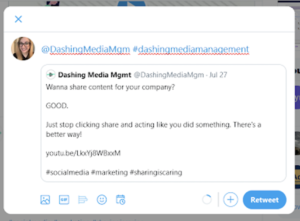I’m on vacation this week so my friends are taking over the Project! Enjoy their content, connect with them, and share the content with new people! Some amazing voices coming to you this week!
Enjoy this post by Micole Garatti
6 seconds. You spend 6 seconds reading a resume. In those 6 seconds, what do you learn? You’ll likely find out what your candidates have done in the past. But, what about all the things a candidate could do? Or would love to do?
The truth is 82% of Fortune 500 executives don’t believe their companies recruit highly talented people. So perhaps our approach to hiring is all wrong?
With that said, what can we do to hire the best – highly talented – people?
Strategic Hiring Planning: Know Who You Are Looking For
The first part of hiring great people is strategic planning. When you’re reviewing resumes, how do you know what you’re looking for if you don’t know who you’re looking for? Doing the research and having the conversations required to understand what job you need done, who you need to do it, what skills your team already has, and what skills you need to add is critical.
Once you understand who you’re looking for, you can start doing the work to find them.
Our Focus on our Candidates’ Past
Prior to the 1980s, hiring was focused on finding people who could learn and grow with the organization. Since then, organizations have designed hiring processes based on what candidates have done in the past and not who they are as a person or what they can do. That past-focused is highly visible in outdated resume and interview processes.
You might think that you’ll get a glimpse of potential in interviews. Believe it or not, however, research shows that interviews are pretty useless. Psychologist Ron Friedman suggests that interviews don’t help organizations hire great people because “80% of people lie during interviews.” Further, interviews include a lot of subjective and incorrect judgments like that leadership abilities, trustworthiness, and credibility are based on dumb things like attractiveness, height, and pitch of voice.
This subjective, judgemental, and past-focused approach has led to bad hires, toxic cultures, as well as a lack of growth, employee disengagement, and turnover. Again, the past only talks about what someone has already done – not what they can or want to do.
Moving Forward & Candidate Potential
With the basic understanding that our past-focused hiring approach hasn’t been working, here are some solutions that may help us become more future-oriented. To understand someone’s potential, things like “job auditions” and pre-hire assessments can help.
Assessments offer what many experts call an alternative to a job interview, what they call a job “audition.” These auditions put people in job preview scenarios and observe the behaviors and competencies. For example, if you need web developers, you can set up a coding test to test a candidate’s coding skills in certain languages. Or, if you’re looking for great customer success folks, finding out how a person can handle difficult or upset customers can be telling.
Now you might be thinking, “well what’s stopping candidates from just Googling all the answers or making stuff up about their personality?” Many assessment solutions, like Talview, offer cheat-detecting and preventing features that secure a candidate’s browser, prevent copying and pasting, and even watermark tests so people don’t take pictures of questions and float them online. Even more, the system can tell when someone else comes into the frame, talks to the candidate, and sends a detailed report to your recruiting team to review.
Assessment technology aside, if we want to hire better people, we need a better way to assess the skills, motivations, desires, and capabilities of our candidates. Maybe a new approach – one focused on not the past, but potential – can help.
Micole Garatti is the Marketing Manager at Talview, Author of “The Most Inclusive HR Influencer List,” and Host of the #HRforAll Twitter chat. She is passionate about improving HR and talent acquisition through diversifying voices of influence within the profession and technology. She’s appeared or been featured as an HR and marketing expert on ERE, DriveThruHR, Workology, Carnival of HR, #HRSocialHour, the SHRM blog, and more. Find her on Twitter at @socialmicole or at www.socialmicole.com.




